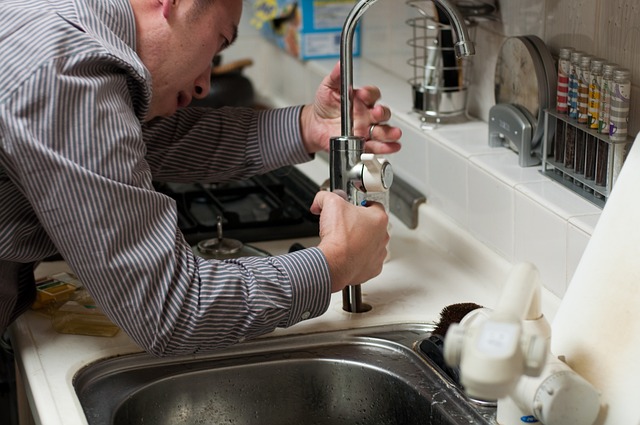When it comes to the safety of our homes, there is no room for compromise. We want our families and loved ones to feel secure within the walls of our houses. One way to ensure this is by implementing a structured maintenance plan. By proactively addressing potential hazards and regularly maintaining key components of our homes, we can significantly enhance home safety. In this blog, we will explore the benefits of a structured maintenance plan and provide practical tips for planning and implementing one.
The Benefits of a Structured Maintenance Plan
1. Preventive Maintenance
A structured maintenance plan involves regular inspections and repairs. By identifying potential hazards or risks, we can take proactive measures to address them before they become serious issues. For example, checking electrical systems, plumbing, and heating regularly can help prevent accidents such as fires or water damage. Also, by investing in preventive maintenance for roofing services, property owners can extend the lifespan of their roofs, avoid costly emergency repairs, and stay up-to-date with the condition of their roofs. Some common preventive maintenance tasks include removing debris, clearing drains, inspecting the roof surface, and addressing leaks promptly. Through preventive maintenance, we ensure the proper functioning of essential systems and minimize the chances of unexpected failures.
2. Increased Longevity of Home Components
Timely maintenance and repair not only prevent further damage but also extend the lifespan of appliances, fixtures, and structural elements. Regularly cleaning gutters, for instance, can prevent water buildup and potential damage to the foundation of the house. By investing in maintenance, we save money on costly replacements and ensure that our homes remain safe and functional for years to come.
3. Mitigating Safety Hazards
A structured maintenance plan helps us address safety hazards promptly. Electrical issues, for example, can lead to fires if left unattended. By conducting regular inspections and addressing any faults, we reduce the risk of fire incidents. Similarly, checking for and fixing leaks helps prevent water damage and mold growth, creating a safer living environment for residents and visitors.
Planning and Implementing a Structured Maintenance Plan:
1. Assessing Home Maintenance Needs
To create an effective maintenance plan, it is crucial to assess the unique maintenance needs of our homes. This involves identifying key areas of focus, such as electrical systems, plumbing, HVAC, and structural integrity. By understanding the specific requirements of our homes, we can tailor our maintenance efforts accordingly.
2. DIY vs. Professional Assistance
While some maintenance tasks can be done by homeowners themselves, others require professional expertise. It is essential to evaluate the pros and cons of DIY maintenance and determine when it is necessary to hire professional contractors. Tasks such as electrical work or major plumbing repairs are best left to experienced professionals to ensure safety and compliance with building codes.
3. Creating a Checklist
To stay organized and ensure that no maintenance task is overlooked, it is helpful to create a comprehensive checklist. This list should include essential maintenance tasks such as inspecting smoke detectors, checking for leaks, cleaning HVAC filters, and testing carbon monoxide detectors. Setting reminders for routine inspections and maintenance activities can help homeowners stay on track.

Tracking and Documenting Maintenance Activities:
1. Using Technology Tools
Technology can greatly assist in tracking and managing maintenance activities. There are maintenance management software or apps available that allow homeowners to keep track of completed tasks and upcoming maintenance. These tools can send reminders, provide checklists, and help maintain digital records of maintenance activities.
2. Organizing Documentation
It is important to maintain records of inspections, repairs, and replacements. By organizing documentation, including invoices, warranties, and manuals, homeowners can easily access essential information when needed. Storing these documents in a safe and easily accessible place ensures that valuable information is readily available.
Real-Life Examples and Applications of Structured Maintenance Plans
Real-life examples can highlight the effectiveness of structured maintenance plans. For instance, a homeowner who implemented a maintenance schedule noticed a significant reduction in water damage incidents by regularly inspecting and repairing their roof. Another homeowner experienced improved indoor air quality and reduced allergy symptoms by consistently cleaning and replacing HVAC filters. These examples demonstrate how structured maintenance plans can lead to tangible benefits and enhance home safety.
A structured maintenance plan is a vital component of ensuring home safety. By implementing preventive maintenance, addressing potential hazards, and regularly maintaining key components, we can significantly reduce the risk of accidents and damage. By assessing our homes’ unique requirements, creating checklists, tracking maintenance activities, and organizing documentation, we can stay organized and proactive. Let’s prioritize home safety by implementing a structured maintenance plan and enjoy peace of mind knowing our homes are safe and secure for our loved ones.
